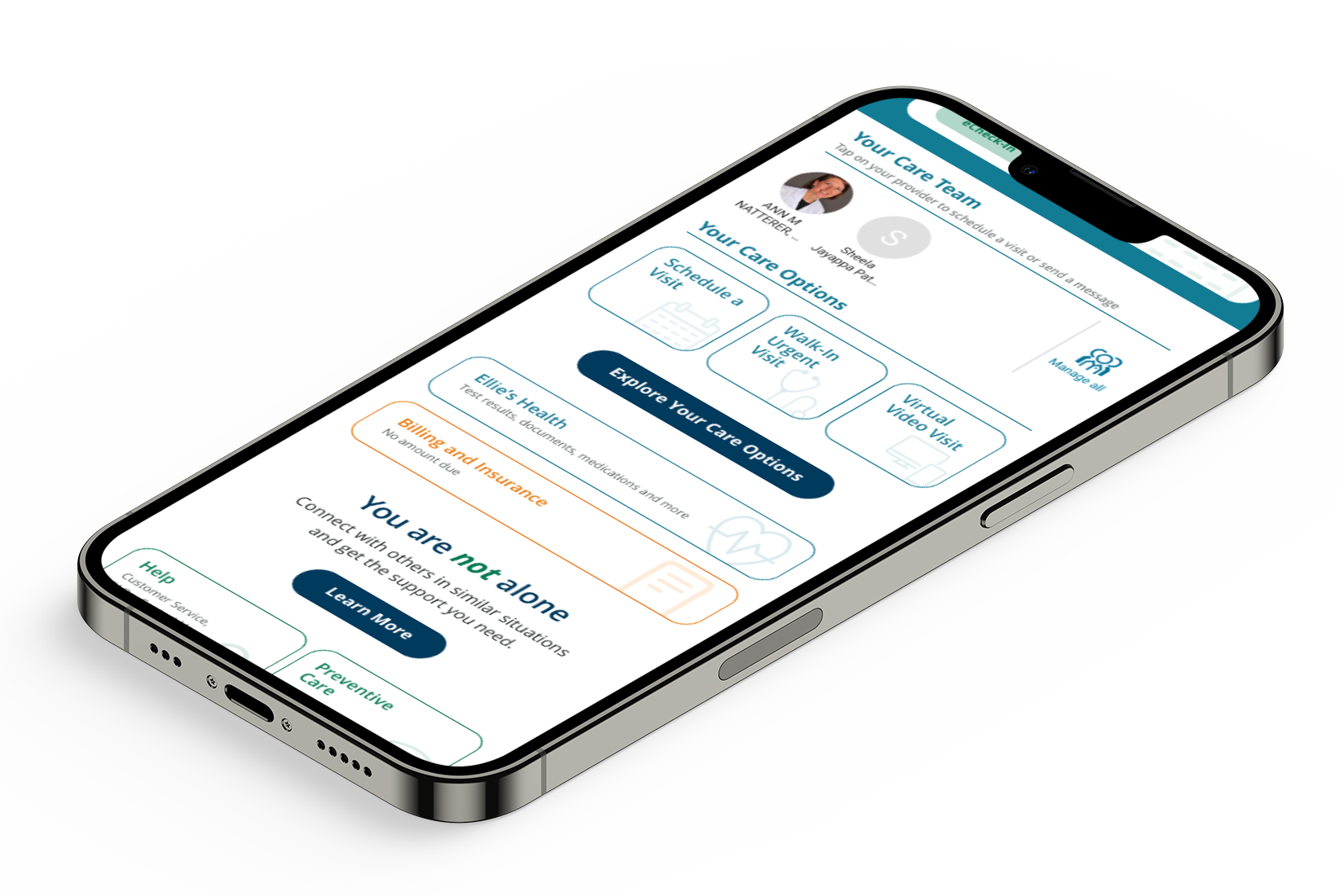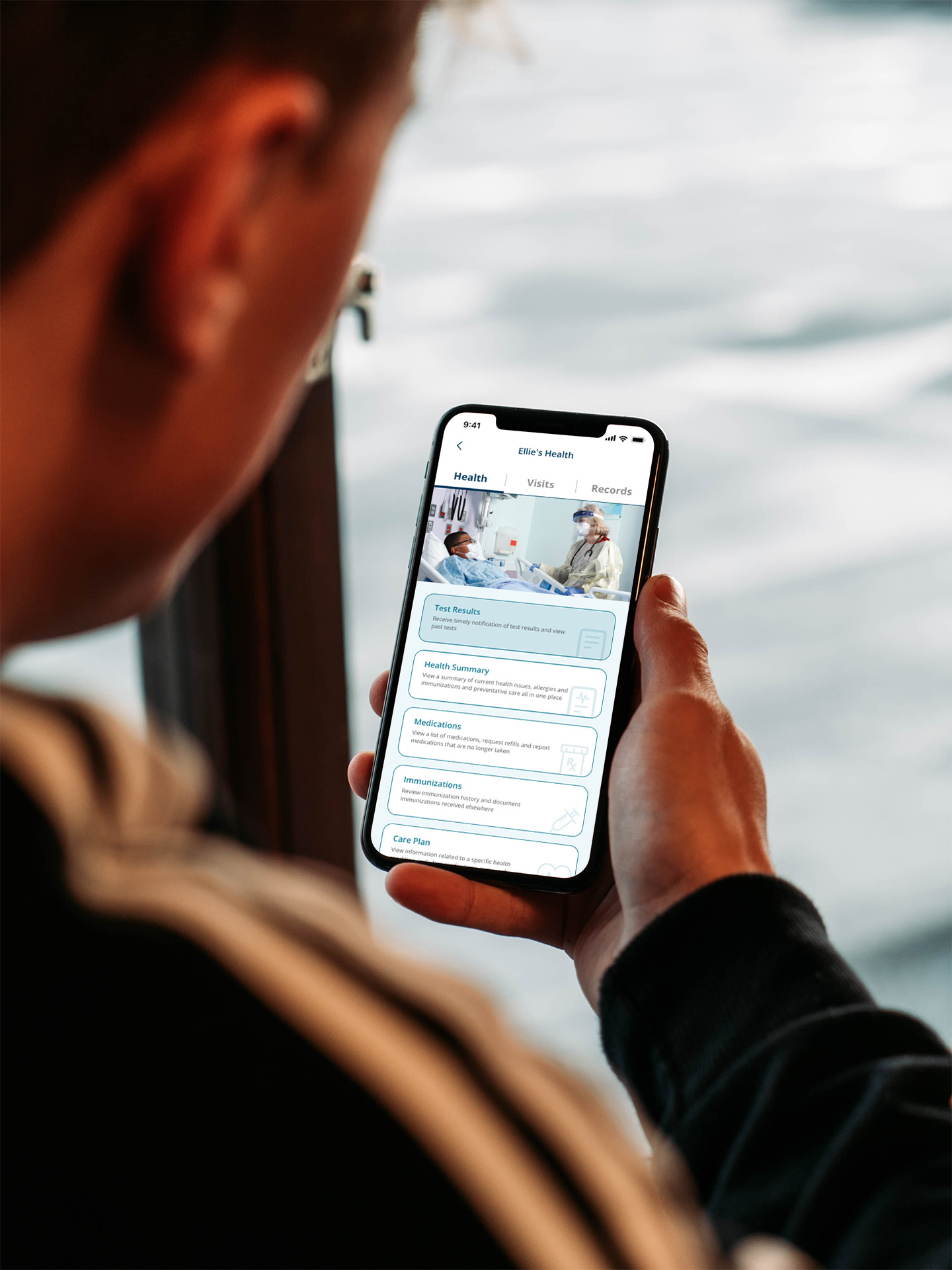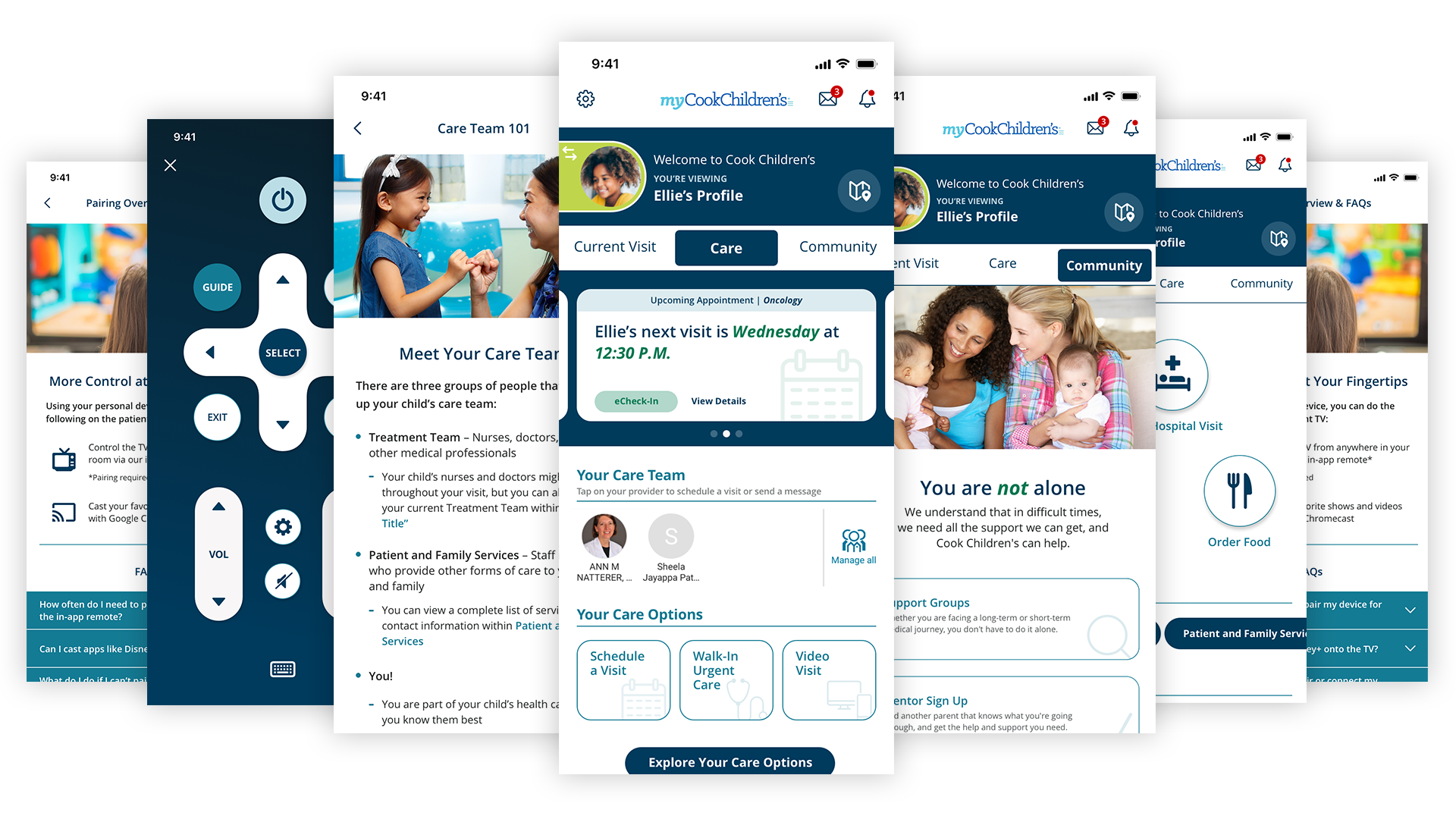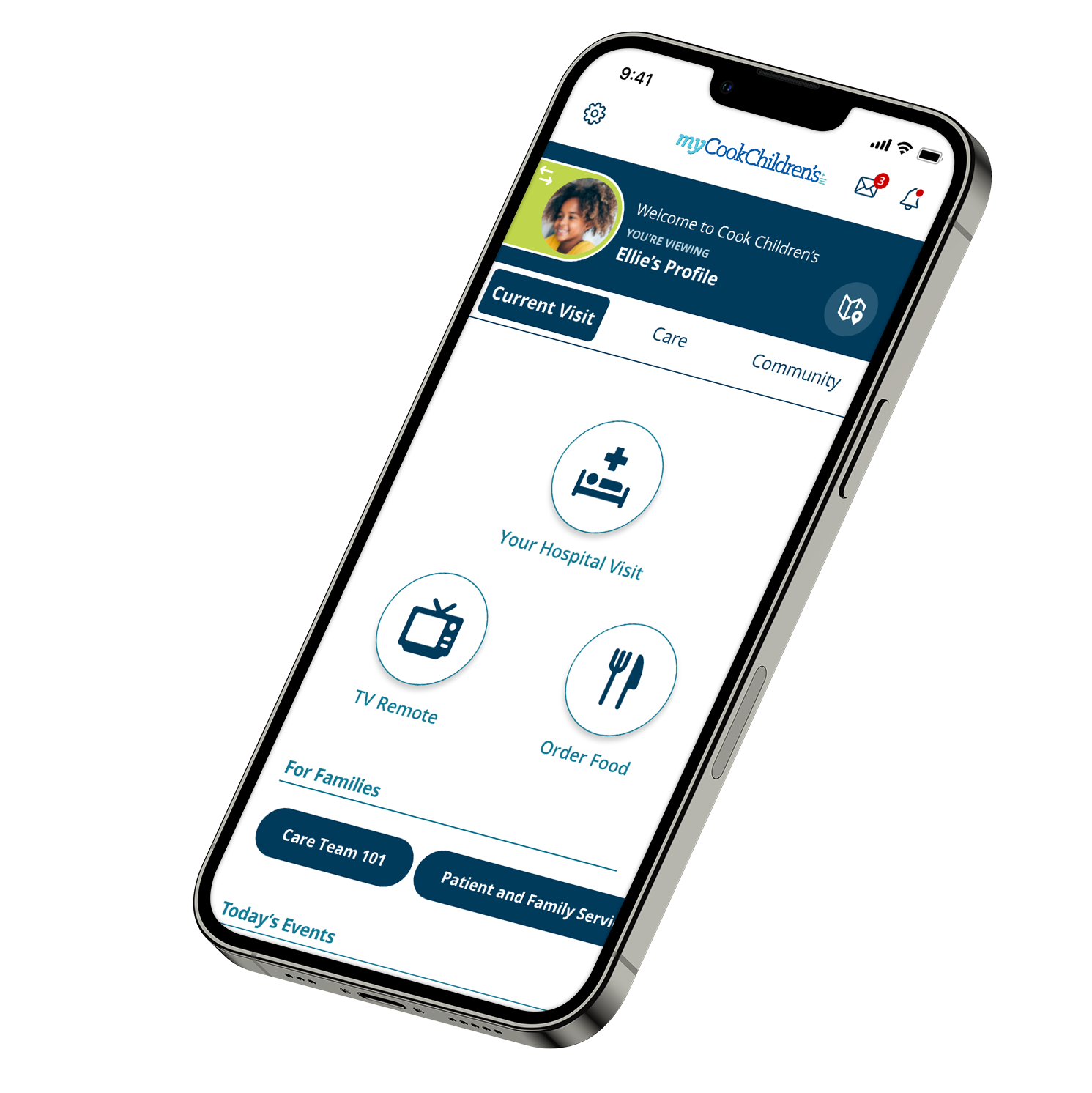A new set of patient needs are emerging across a new set of access points from virtual visits, to retail, to home care. Traditional access points like hospital stays are ripe for an overhaul to address patient needs with new tools. Expectations of ease of access are driving health care systems to meet their customers where they are by providing seamless digital experiences that are in line with evolving customer expectations.
When patients and families come to Cook Children’s, they are often navigating a challenging and complex care journey with a child. These times are likely difficult, challenging, and emotional even before the family interacts with the health system itself. Cook Children’s strives to meet families with a human connection that helps them feel heard and understood, while also striking a balance of convenience, ease, and simplicity for each family. Part of that empathic care connection is giving families a choice in how they want to interact with the hospital system. For more and more families who interact with many services and sellers online, we know that many are shifting their preferences toward digital interactions that also removes unnecessary friction and creates more convenience. Unfortunately, most hospital systems don’t operate in a way that feels simple and easy for patients. The complexities of healthcare extend beyond the patient experience to the broad ecosystem of digital tools that need to play together in the proverbial sandbox to offer effective, and efficient, care to those they serve.
With all this and more in mind, Cook Children’s and Bottle Rocket embarked on a mission to bring the power of a personalized digital care journey to the family. The collective team defined a goal to establish a strong mobile foundation that can grow, flex, and enable the Cook Children’s strategies of tomorrow, all while meeting families where they are with ease and access today.


A new mobile experience began to take shape that leveraged an improved navigation in key focus areas: increasing efficiency, making it convenient, growing and maintaining connections.

The new experience extended the powers of the EHR for transactional care while also surfacing hyper-relevant and real-time needs for upcoming appointments, preventive care reminders, and navigating to care options. Families now have easier access to aspects of their health, and are able to find care where and when they need it most. This optimization also unlocked new areas to connect families in the community. Parents and kids facing similar clinical conditions can enroll in support groups directly from the new app. The support communities offer parents an outlet to ask questions, engage in dialogue, and help others facing similar challenges.
These personalized and focused areas were grounded in a framework to measure success. KPIs and key results were established that align with Cook Children’s strategic objectives. The new Cook Children’s mobile experience brings the ever-changing patient expectations to the forefront by meeting patients where they are and building a foundation for growth addressing future needs. By enabling family members with the right digital tools to book appointments, sign-up for support groups (to name just a few), it also helped deliver efficiency gains (in the form of fewer phone calls and less paper) to Cook Children’s staff so they could focus more quality time on direct patient care.

Never resting, Cook Children’s and Bottle Rocket didn’t stop after the experience launched.
While building a new medical center in the Prosper area Cook Children’s took advantage of the flexible architecture the experience was built upon to introduce digital experiences for their patients when the hospital opened. The well-aligned Cook and BR team operated as a single entity that could then effectively bring multiple new vendors into the experience. With a seamless combination of native development and vendor contributions patients and families at the Prosper facility can now review clinical information relevant to their current hospital stay like their care team – which can change each shift – in addition to expanded views into medications and test results optimized to display information relative to the hospital setting.
Just expanding access to health information wasn’t sufficient. At the time the Prosper facility opened patients could also use their mobile devices to remotely control the televisions in their room, pull up real-time directions to specific points of interest on the campus, and order food to their room. Upcoming events are brought to the forefront of the experience to give patients things to look forward to while their families have an opportunity to review the welcome packet at a time that is right for them.
